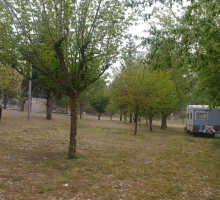A pillory with an architectural style similar to others dating from the 16th century can still be found in Sendim.
It is located in one of the village’s squares, near the parish church. The pillory rests on a platform of three square-shaped steps, with the upper step serving as a plinth to a column with a square-shaped base. The octagonal shape of the column’s shaft is created by its chamfered corners. The shaft is topped by a square section serving as a simple capital. The pillory is crowned by a large square and bowl-shaped stone piece. Its decoration is hard to read but there seem to be traces of an armillary sphere. Topping this stone piece are four pyramid-shaped cantonal pinnacles, decorated with four ridges and a rounded finish.
There is no record of a charter issued by King Manuel to the village of Sendim. Nevertheless, this pillory may have been built during the 16th century, judging from the traces of the armillary sphere, which was the emblem of King Manuel and repeatedly carved in the official monuments erected during his reign.
Location: Tabuaço
It is located in one of the village’s squares, near the parish church. The pillory rests on a platform of three square-shaped steps, with the upper step serving as a plinth to a column with a square-shaped base. The octagonal shape of the column’s shaft is created by its chamfered corners. The shaft is topped by a square section serving as a simple capital. The pillory is crowned by a large square and bowl-shaped stone piece. Its decoration is hard to read but there seem to be traces of an armillary sphere. Topping this stone piece are four pyramid-shaped cantonal pinnacles, decorated with four ridges and a rounded finish.
There is no record of a charter issued by King Manuel to the village of Sendim. Nevertheless, this pillory may have been built during the 16th century, judging from the traces of the armillary sphere, which was the emblem of King Manuel and repeatedly carved in the official monuments erected during his reign.
Location: Tabuaço





